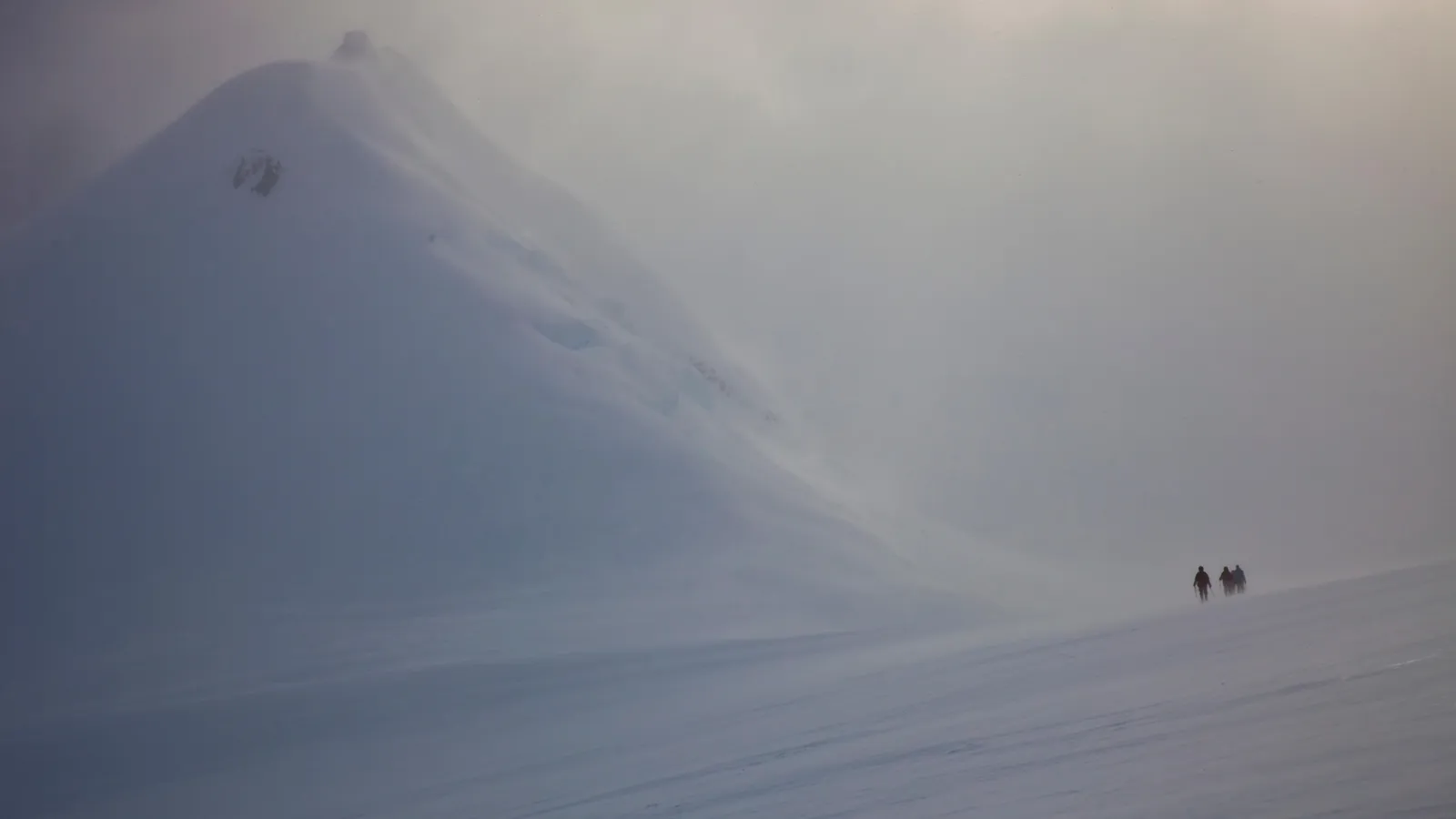The search for Earth's hidden mountains
The deep Earth contains vast mountain ranges with peaks up to four times the height of Everest. But no one knows why.

It was a glaring summer's day in Antarctica. Through frozen eyelashes, Samantha Hansen blinked out at the featureless landscape: a wall of white, where up was the same as down, and ground blended seamlessly into sky. Amid these disorientating conditions, with temperatures of around -62C (-80F), she identified a suitable spot in the snow, and took out a spade.
Hansen was in the continent's bleak interior – not the comparatively balmy, picturesque Antarctica of cruise ship tours, but an unforgiving environment rarely even braved by the local wildlife. As part of a team from the University of Alabama and Arizona State University, she was looking for hidden 'mountain' ranges – peaks that no explorer has ever set foot on, no sunlight has ever illuminated. These mountains occur deep within the Earth.
It was 2015 and the researchers were in Antarctica to set up a seismology station – equipment, half-buried in the snow, that would allow them to study the interior of our planet. In total, the team installed 15 across Antarctica.
The mountain-like structures they revealed are utterly mysterious. But Hansen's team discovered that these ultra-low velocity zones or ULVZs, as they are known, are also likely to be almost ubiquitous – wherever you are in the world, they may be lurking far beneath your feet. "We found evidence for ULVZs kind of everywhere [we looked]," says Hansen. The question is – what are they? And what are they doing inside our planet?
A mystery history
The Earth's strange interior mountains occur at a critical threshold: the one between the planet's metallic core and the surrounding rocky mantle. This abrupt transition is, as Hansen's team point out, even more drastic than the change in physical properties between solid rock and air. It has been tantalising experts for decades – as enigmatic as it is influential to the geology of the planet.
Though the 'core-mantle boundary' is thousands of kilometres from the Earth's surface, there is a surprising amount of interchange between its unfathomable depths and our own world. It's thought to be a kind of graveyard for ancient pieces of the ocean floor – and it may even be behind the existence of volcanoes in unexpected locations, such as Hawaii, by creating super-heated highways to the crust.
The story of the deep-Earth mountains began in 1996, when scientists explored the core-mantle boundary far beneath the central Pacific Ocean. They did this by studying seismic waves created by massive ground-shuddering events: usually earthquakes, though nuclear bombs can achieve the same effect. These waves pass right through the Earth, and can be picked up by seismic stations at other locations on its surface, sometimes more than 12,742 km (7,918 miles) away from where they started. By examining the paths the waves take as they travel through – such as the way they're refracted by different materials – scientists can piece together an X-ray-like picture of the interior of the planet.
When researchers looked at waves generated by 25 earthquakes, they found they inexplicably slowed down when they reached a jagged patch on the core-mantle boundary. This vast, otherworldly mountain range was highly variable – some peaks stretched 40km (24.8 miles) up into the mantle, equivalent to 4.5 times the height of Everest. Meanwhile, others were just 3km (1.7 miles) high.
Since then, similar mountains have been found lurking at scattered locations all around the core. Some are particularly large: one monster specimen occupies a patch 910km (565 miles) across under Hawaii.
Yet to this day, no one knows how they got there, or what they're made of.
One idea is that the mountains are parts of the lower mantle that have been superheated due to their proximity with Earth's incandescent core. While the mantle can reach 3,700C (6,692F), this is relatively mild – the core can achieve atom-bending highs of 5,500C (9,932F) – not far off the temperature at the surface of the Sun. The hottest parts of the core-mantle boundary, it is suggested, may become partially molten – and this is what geologists see as ULVZs.
Alternatively, the deep-Earth mountains could be made from a subtly different material to the surrounding mantle. Incredibly, it's thought that they could be the remains of ancient oceanic crust which disappeared into its depths, eventually sinking down over hundreds of millions of years to settle just above the core.
In the past, geologists have looked to a second puzzle for clues. The deep-Earth mountains tend to be found near other mystery structures: enormous blobs, or large low-shear velocity provinces (LLSVPs). There are just two: an amorphous lump called "Tuzo" beneath Africa, and another known as "Jason" beneath the Pacific. They are thought to be truly primeval, possibly billions of years old. Again, no one knows what they are, or how they got there. But their close proximity to the mountains has led to the belief that they're somehow linked.
One way to explain this association is that it did indeed all begin with tectonic plates slipping down into the Earth's mantle, and sinking to the core-mantle boundary. These then slowly spread out to form an assortment of structures, leaving a trail of both mountains and blobs. This would mean both are made from ancient oceanic crust: a combination of basalt rock and sediments from the ocean floor, albeit transformed by the intense heat and pressure.
But the existence of deep-Earth mountains below Antarctica could contradict this, Hansen suggests. "Most of our study region, the southern hemisphere, is pretty far away from those larger structures."
A frigid quest
To install their Antarctic seismology stations, Hansen and her team flew out to suitable locations in helicopters and small planes, placing the equipment in waist-deep snow – some near the coast, under the curious gaze of resident penguins, others inland.
It only took a matter of days to get the first results. The instruments can detect earthquakes almost anywhere on the planet – "If it's big enough, we can see it," Hansen says – and there are plenty of opportunities. The US National Earthquake Information Center records around 55 across the globe every day.
While identifying deep-Earth mountain ranges had been done before, no one had ever checked for them below Antarctica. It's not near either of the mystery blobs, or close to where any tectonic plates have recently fallen. Yet to the team's surprise they found them at every site they sampled.
Previously the mountains were thought to be scattered near places occupied by blobs. But Hansen's results suggest they may form a continuous blanket that wraps around Earth's core.
Testing this idea will require a lot more investigation: before the Antarctic study, just 20% of the core-mantle boundary had been checked. "But we're hoping to fill that gap," says Hansen, who explains it's also dependent on the development of new techniques for identifying smaller structures. In some regions, the ULVZ structures are more like slim plateaus than mountains, so it's not possible to see the entire layer just yet – they don't show up on seismographs, if they are there at all.
However, if the mountains really are that widespread, it would have implications both for what they are made of and how they're linked to the larger blob structures. Could the smaller, mountain-sized remains of tectonic plates really have ended up scattered that far away from the larger blobs?
Whatever we discover, it's oddly fitting that the frigid, alien landscape of Antarctica has given us clues to the strange, super-heated mountains of the deep Earth.
-bbc





